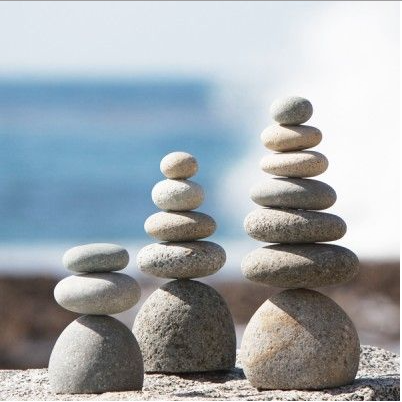According to Wikipedia, a “cairn” is a “human-made” pile of stones. It is a Scottish Gaelic word that has been in use for a very. very long time. Cairns are used to mark the summit of a peak, to serve as headstones–to mark a gravesite–or for ceremonial purposes, like to commemorate an astronomical event–an eclipse, for instance. But, here in the West, in trails in red-rock country and along mountain paths, they’re usually left behind as trail markers, as if to tell the hiker, “you’re on the right track–keep going.” Sometimes, there’s a wedge pointing to the left or right indicating there’s a fork in the road, telling you to take it!
But, for me, there’s another kind of cairn that I hold dear, and it’s not made of stones.
This type of cairn is constructed of flesh and blood and is inhabited by spirit. I’m referring to the cairns we met along the trail of life who have kept us on track, or from time to time, suggest we take the road less travelled. These cairns are parents, grandparents, teachers, guides and friends who have played significant roles in our lives and helped us become who we are today.
These characters, these cairns, deserve their place in our life’s story. As we scratch our heads and look for ideas to keep our memoir going, to keep it fresh and alive–and certainly interesting for the reader–we can type out a brief encounter, maybe even a snippet of a biographical piece of someone who touched our lives, maybe even changed our life’s direction.
One such “human” cairn in my life I met when I was 11 years old. His name was Roland Rathke, rather Elder Roland Rathke, and he was my Sunday School teacher. It was a very long time ago and much of what I remember is quite foggy, but this I do recall: he had returned from an LDS mission to Germany, possibly early because of health problems. At any rate, for a few short months, he regaled us with stories about walking the cobblestone streets of the country where his family came from. It was only 10 years or so after the end of World War II, but his stories of his missionary exploits there made an impression on me. I thought of old cities, medieval churches, green countrysides and brats and sauerkraut and even rubble from bombed out sections of cities still under reconstruction. Just a few months afterwards, my mother woke me up one morning and told me Elder Rathke had died the night before of kidney failure. I was heart-broken; nevertheless, for me, having sat in his class and listened to his stories changed my path.
Four years later, I started high school, and one of the first elective classes I signed up for was German; I took two years worth. In 1964, I was called on my own mission to the West German Mission, and I was thrilled. Then a year ago, my wife and I returned from serving a year-and-a-half senior mission to Frankfurt Germany (same city). No, I didn’t choose where I would go or where I would serve, but on MY path, Elder Rathke was an important marker along the way.
Who are your “human” cairns? Who had such an influence in your life as to change the path you took? Why was it significant? How is it that after all these years you still feel their influence in how you look at things and how you treat others? So write about them. Type out a little biographical sketch. Share their humor. Paint a picture. These characters in your life weren’t just piles of stones. They were real, flesh-and-blood trail markers along your life’s path. Bring them to life in your story. Your readers will love it!
GM JARRARD

